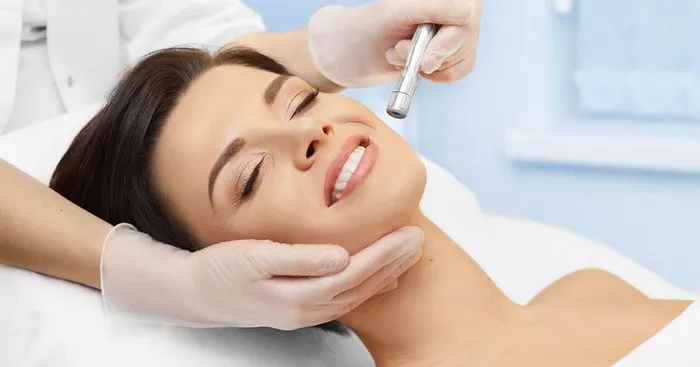Sun spots, also known as solar lentigines or age spots, are darkened areas of skin that develop due to prolonged exposure to ultraviolet (UV) radiation from the sun. These spots can appear on various parts of the body, especially areas that are frequently exposed to sunlight. As individuals seek effective treatments to address the appearance of sun spots, microdermabrasion has emerged as a popular option. This article explores the question: “Can microdermabrasion remove sun spots?” By delving into the mechanism of microdermabrasion, its benefits, and its limitations, we can better understand its role in sun spot treatment and management.
Understanding Microdermabrasion
Microdermabrasion is a non-invasive cosmetic procedure that aims to improve skin texture and appearance by gently exfoliating the outermost layer of dead skin cells. The procedure involves using a handheld device to spray tiny crystals onto the skin’s surface, simultaneously suctioning away the exfoliated skin cells. This process promotes the growth of new skin cells, revealing a smoother and more youthful complexion.
Sun Spots and their Causes
Sun spots are typically flat, brown or black spots that appear on the skin due to the overproduction of melanin, the pigment responsible for skin color. Prolonged exposure to UV radiation triggers the melanocytes in the skin to produce more melanin, resulting in the formation of sun spots. These spots often become more noticeable as individuals age and accumulate sun exposure over time.
Can Microdermabrasion Remove Sun Spots?
While microdermabrasion can improve overall skin texture and tone, it has limitations when it comes to completely removing sun spots. Microdermabrasion primarily targets the outer layer of the skin, known as the epidermis. Sun spots, however, often develop deeper within the skin layers. As a result, the exfoliation provided by microdermabrasion may not reach the depth required to eliminate sun spots completely.
Benefits of Microdermabrasion for Sun Spots
Although microdermabrasion may not entirely remove sun spots, it can offer certain benefits for individuals looking to improve the appearance of these spots:
Exfoliation: Microdermabrasion promotes gentle exfoliation of the skin’s outer layer, helping to remove some of the pigmented cells that contribute to the appearance of sun spots.
Enhanced Skin Texture: Microdermabrasion can create a smoother and more even skin texture, which may help reduce the contrast between sun spots and the surrounding skin.
Increased Product Absorption: Following microdermabrasion, the skin’s absorption of topical products, such as skin-lightening treatments, may be enhanced. This could contribute to a gradual reduction in the appearance of sun spots over time.
Limitations and Alternative Treatments
While microdermabrasion offers benefits, individuals seeking more significant improvement or complete removal of sun spots may need to explore alternative treatments:
Laser Therapy: Laser treatments, such as intense pulsed light (IPL) therapy and fractional laser resurfacing, can target sun spots with more precision and effectiveness, reaching deeper layers of the skin.
Chemical Peels: Chemical peels involving stronger acids can help improve the appearance of sun spots by promoting skin cell turnover and reducing pigmentation.
Topical Treatments: Certain topical treatments containing ingredients like hydroquinone, retinoids, and vitamin C can help fade sun spots over time.
Conclusion
While microdermabrasion has its merits in promoting smoother skin texture and enhancing the overall appearance of the skin, it may not be the ideal treatment for completely removing sun spots. Microdermabrasion’s exfoliation primarily targets the outer layer of the skin, whereas sun spots often originate deeper within the skin’s layers. Individuals seeking more significant improvement or removal of sun spots should consider alternative treatments such as laser therapy, chemical peels, or targeted topical treatments. Consulting with a qualified dermatologist or skincare professional is essential to determine the most appropriate treatment plan based on individual skin type, concerns, and goals. As always, maintaining proper sun protection practices is crucial to prevent the formation of new sun spots and maintain the health and appearance of the skin.

